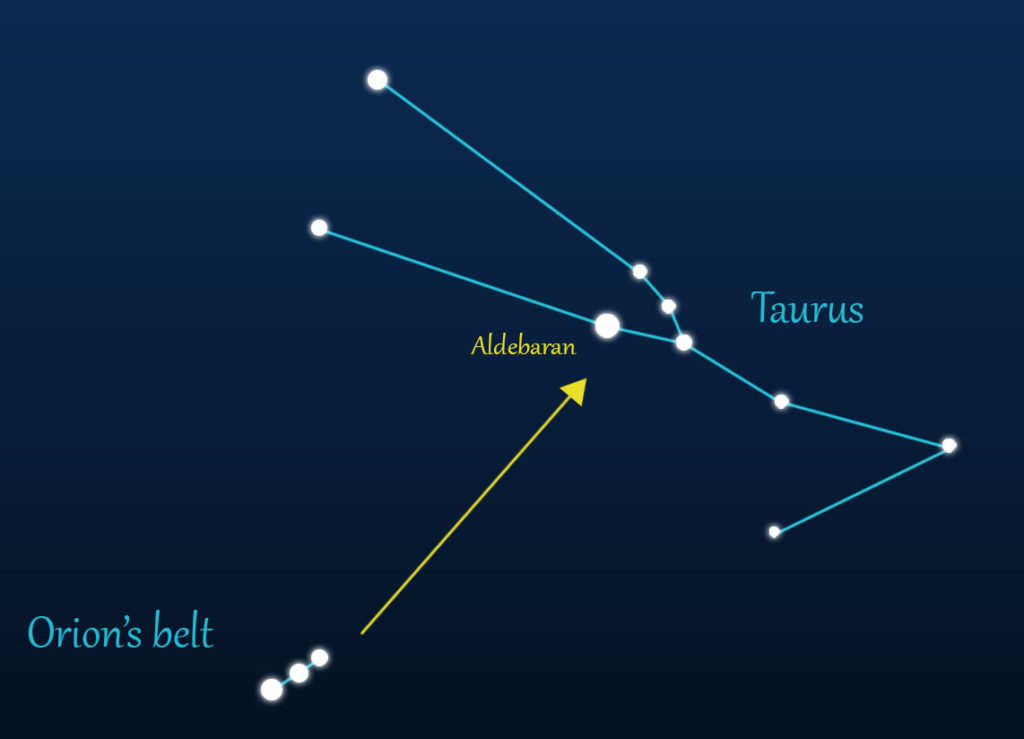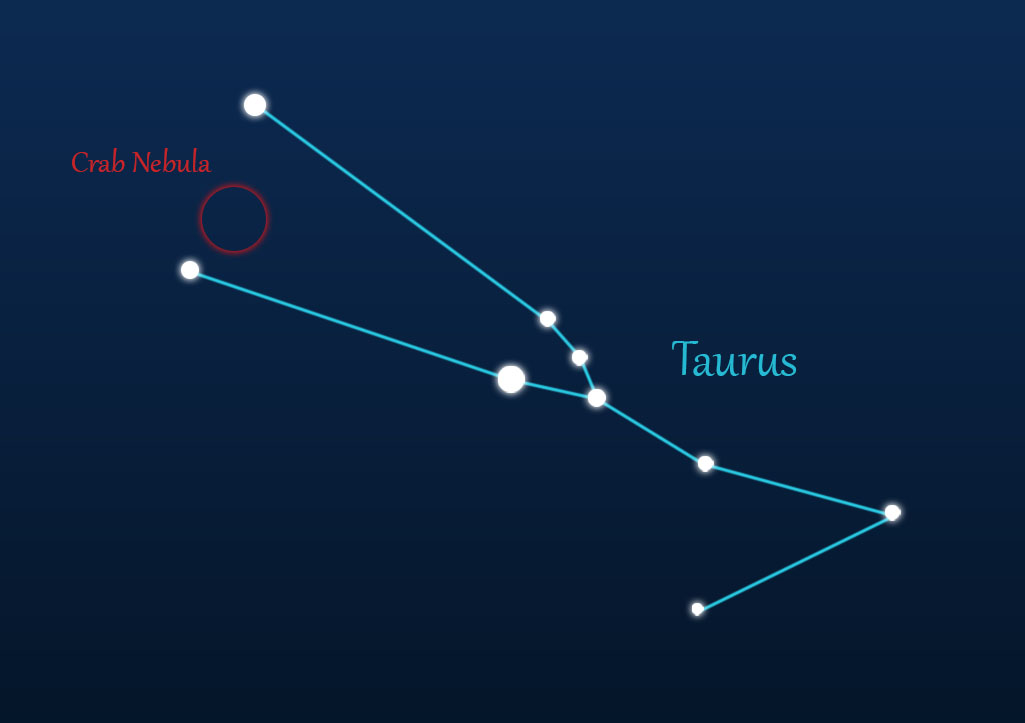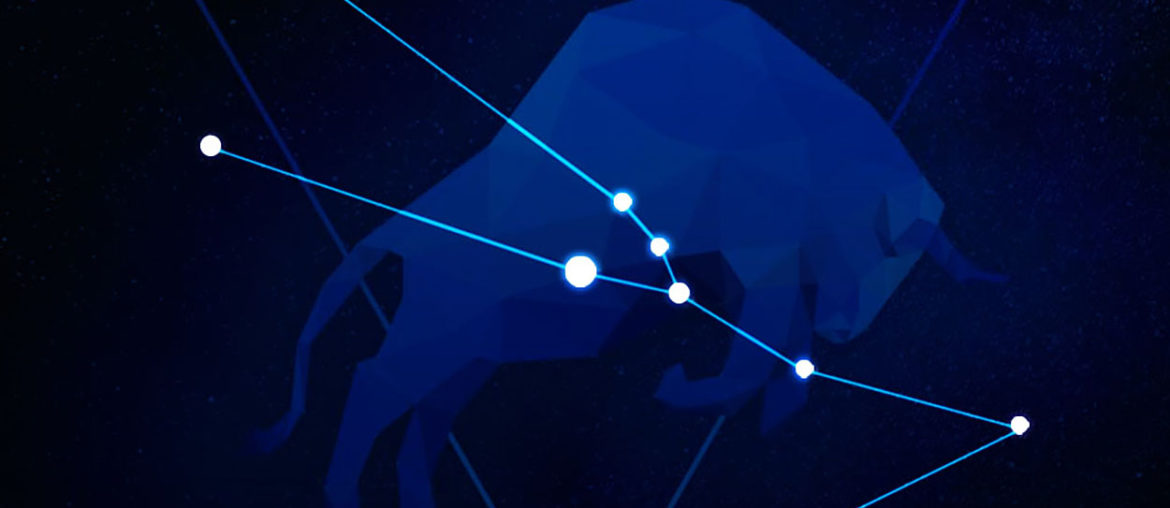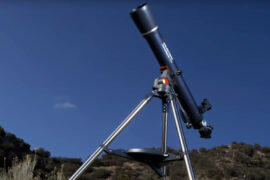The constellation of Taurus is one of the easiest to find in the night sky. It is a great target for beginners to look at and the best part is you don’t even need a telescope (but we’ll show you some cool tricks if you do).
The name Taurus comes from the Greek word for bull. Why? well, just look at it, it does look like a charging beast with big horns.
It is no surprise this constellation is one of the most popular as it is part of the zodiac belt. There’s about a 1:12 probability that any person you meet on the street is a Taurus. If you want to impress them, learn how to locate it in the sky.
When is Taurus visible in the sky?
The one consideration you need to have when trying to find Taurus or any other constellation is that most of them are not visible all year long.
Taurus is visible for about 9 months every year, between August and April. The best months to watch it are December and January because you can find it all night long.
The constellation starts hiding behind the Sun around May and by June, and July it is no longer possible to observe it.
There are two easy methods you can use to find this not-so-elusive bull. Let’s take a look at them.
Method 1: Orion’s Belt
Thankfully for us, Taurus is neighbor to one of the most prominent features of the sky: Orion. This allows us to use Orion’s stars to guide us.
If you don’t know how to find Orion, just look up and find 3 stars very close to each other forming a straight line. It’s really hard to miss them during the winter months. That is Orion’s Belt and is right in the middle of Orion.
Once you have located Orion’s belt, trace an imaginary a straight line that crosses them and extend it in the sky in the direction of the one at the “top”.
If you follow that line with your eyes, you will quickly find it connects almost perfectly with a really shiny star. That star is Aldebaran, it is the 14th brightest star in the sky and forms the base of the right horn of Taurus. You have found it, congratulations!.
The following picture should help you if you are still having trouble.

Method 2: Find the Pleiades
This method works better in places with low light pollution (small cities, towns, camping sites, etc.). If you are in the city, the Pleiades might be hard to find or they might look only like one single spot of light and it will be easy to miss them.
But what are the Pleiades? Well, they are a group of seven bright stars that are really, really close to each other. They look like freckles in the face of the sky.
The Pleiades are not a constellation by themselves, in fact, they form part of Taurus. They have just been nicknamed after the seven companions to the goddess Andromeda because they are such a curious group of stars.
The Pleiades form the “back” of the bull in Taurus. If you can find them, figuring out the other stars that make it up should be easy.

Method 3: Using a GoTo mount
This method has the limitation of requiring specific equipment, but it is by far the easiest.
There are telescope mounts, commonly known as GoTo mounts that allow you to simply enter some data for your location, the current coordinates for the star or object you want to look at and they will automagically point your telescope to the exact spot.
In order to find the coordinates for the star, there are phone apps or websites that can calculate it. Here’s the link to Aldebaran’s (the brightest star in Taurus) data on in-the-sky.org. Make sure your location is set correctly on the site so you can get accurate data.
Looking at Tauris through a Telescope
If you have access to a telescope, there are some other cool things you can find inside its area beyond just stars.
The Crab Nebula
First, there is the Crab Nebula that gets its name because, well, it is read and kinda looks like a crab seen from above.
This nebula is fun to watch, but what’s really cool about it is its history. The Crab Nebula was created barely 1,000 years ago which is like one hour ago in astronomical terms. It was formed when a star went supernova (exploded). The explosion was so bright that people on Earth were able to see it…during the day!. There are records in China and New Mexico of this event happening and people at the time reacting to it.
The Crab Nebula is a great opportunity for astronomers to take a look at the early days of a nebula.
To locate the Crab Nebula, simply find Zeta Tauri, that is the star at the end of the right horn of Taurus. The Crab Nebula is right next to it in the direction of Beta Tauri (the end of the other horn).

The Taurids
Every year a meteor shower occurs in the area of Taurus and is easily visible with a telescope. This meteor shower happens in two phases, one in the northern area of Taurus and one in the South.
The southern taurids start in late September and end in early November. The best date to catch it is October 10 when it reaches its peak.
Right when the southern taurids begins to fade, the northern taurids start. It goes from late October to early December. The best day to watch them is November 12.
Locating the Taurids isn’t too hard once you have located the constellation as they cover a big area.
Learn more about Taurus
We have a whole article explaining everything you need to know about Taurus. It is easy to understand as it is written for all ages so check it out.
How to find more constellations
Aries – Taurus – Gemini – Cancer – Leo – Virgo – Libra – Scorpius – Saggitarius – Capricornus – Aquarius – Pisces







